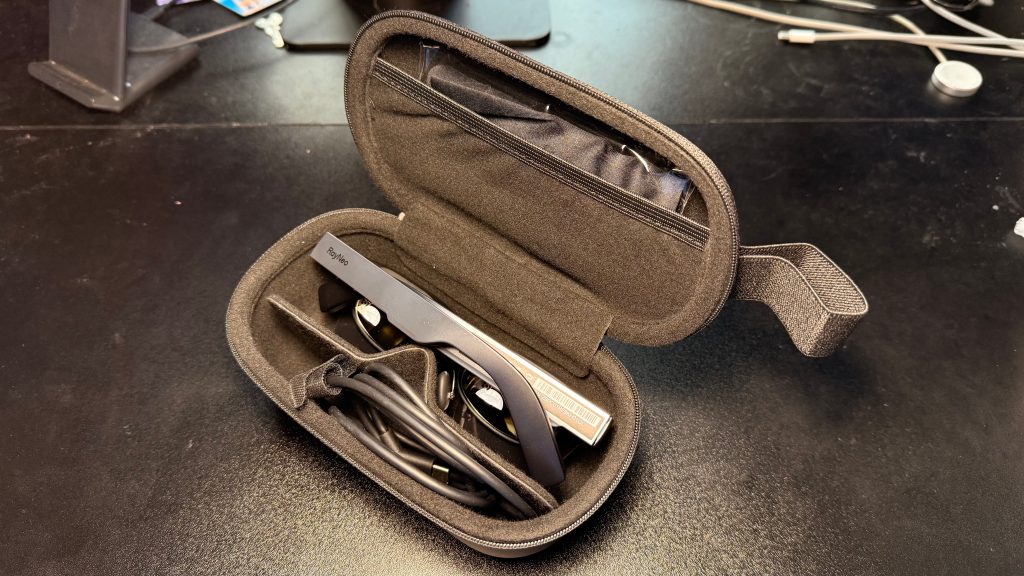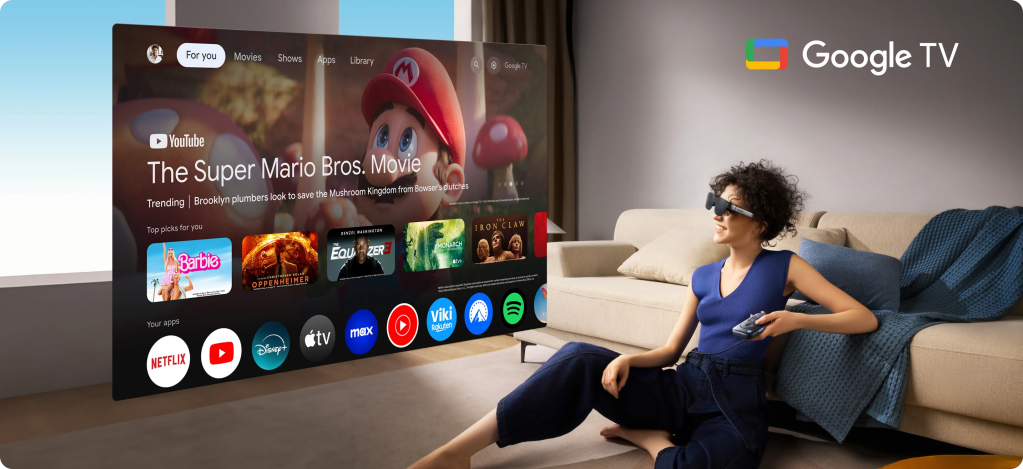Recently, there has been considerable buzz surrounding augmented reality technology, particularly with the launch of devices like Snapchat Spectacles and Meta Orion. While these products come with hefty price tags and are largely inaccessible to the average consumer, there is an emerging market for budget-friendly glasses that offer some advantages of AR technology without breaking the bank. Among these is the RayNeo Air 2, which I’ll share my thoughts about.
Comfort and Fit
To start, these glasses come with a price tag of $399 (currently discounted to $319). Given that, they do have a slightly inexpensive feel to them. The front consists of a single plastic sheet, and they don’t significantly resemble conventional glasses aside from their general outline. The frames are quite flexible, making them easy to manipulate.
This flexibility has its pros and cons; it’s a one-size-fits-all approach, which eliminates sizing concerns during purchase. However, if they don’t fit you snugly, comfort can be an issue. I found it challenging to keep them securely on my face without frequent adjustments. Changing the nose bridge (several options are provided in the box) helped slightly, but ultimately, the fit wasn’t ideal for me. Your own experience may differ.
Despite the glasses’ low price point, the unboxing experience was surprisingly premium. RayNeo, which is a sub-brand of TCL, really excelled in their packaging. Additionally, a high-quality carrying case is included, making it convenient to stow away without worry.


User Experience
At this price range, it’s unrealistic to expect onboard battery life or computing power, meaning they must always be used with a USB-C connection. While this is manageable, it does somewhat limit mobility, as using them on the go can be tricky due to visibility issues. I wouldn’t recommend active use while moving, although technically you can.
The display quality is commendable, with brightness reaching up to 5000 nits, a 120Hz refresh rate, and vibrant colors courtesy of Sony’s microOLED panels. Each eye benefits from a resolution of 1920×1080, which falls short of staggering but is more than sufficient for reading smaller text. RayNeo advertises a 201″ display size from a distance of 6 meters, akin to a cinematic experience.
Personally, I find myself using these mainly while reclining in bed watching YouTube content or shows, and it does provide a more enjoyable visual experience compared to directly viewing on a smartphone. However, if you own a decent television, these glasses won’t compete on that level.
One notable absence, though, is a cover for the displays. Other AR glasses I’ve tried, like the Xreal Airs, included this feature, which enhances immersion by blocking ambient light. It’s a minor component that clips onto the front, but its inclusion would significantly elevate the experience. The glasses are quite dim, so bright lights behind you won’t be blinding, but a cover could improve usability.
The Case for Wired AR Glasses
Wired augmented reality glasses hold substantial merit as they bypass the need for integrated computing power or batteries, cutting costs substantially. Moreover, they can function as a display for any device with USB-C video output, like a Nintendo Switch, adding versatility.
The primary drawback is the lack of an operating system. RayNeo offers an accessory called the “Pocket TV,” which allows you to access Google TV while connected. This gadget also serves as a remote control.

In addition, reports suggest Apple is also looking into a similar concept, potentially developing a Vision headset that connects with your iPhone, relying predominantly on the displays built into the headset for functionality. This approach appears to be aligned with cost-saving measures.
Final Thoughts
In summary, these glasses provide a fascinating enhancement to media consumption on your iPhone, particularly if that’s your preferred device for watching content. The displays are exceptionally bright and visually appealing, complemented by solid speaker performance.
At $319, they may not triumph in every category, but if you’re intrigued by this type of product, they’re an easy purchase—provided they fit well. Additionally, unlike stand-alone headsets, you won’t have to stress about them running out of charge when you wish to use them.
Follow StrongChimp: X/Twitter, Bluesky, Instagram
: . More.



